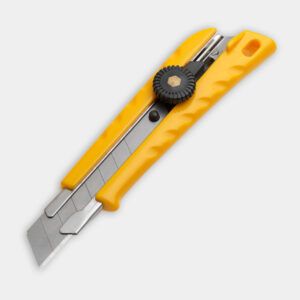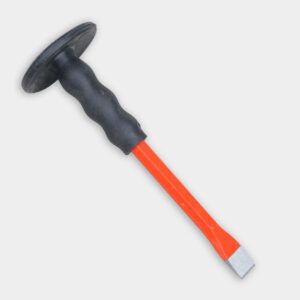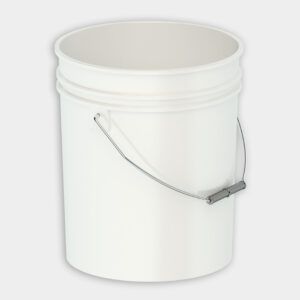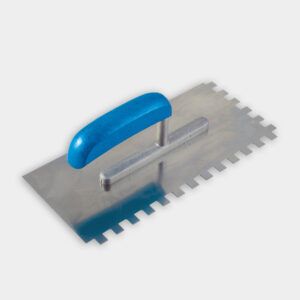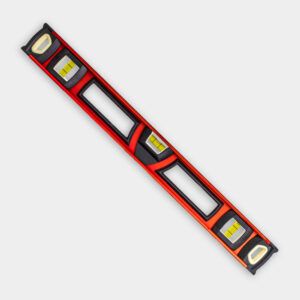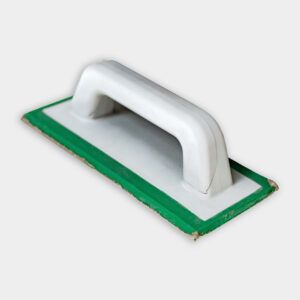We may be compensated if you purchase through links on our website. Our team is committed to delivering honest, objective, and independent reviews on home products and services.
Project details
Skill
Cost
Estimated Time
A cracked floor tile can be an eyesore, but replacing a single damaged tile is a manageable do-it-yourself (DIY) project for many homeowners. With the right tools and techniques, you can restore the look of your floor without having to replace the entire surface. In the video above, This Old House general contractor, Tom Silva, demonstrates the step-by-step process of removing a broken tile and installing a new one in its place.
Assessing Tile Damage
How damaged is your tile? Depending on your answer, you’ll need some materials and tools to get started on this DIY project.
Carefully inspect the damaged tile and surrounding area. Look for any additional cracks or loose tiles that may need attention. If multiple tiles are damaged, you may need to consider a larger repair project.
To replace a single cracked floor tile, you’ll need the following:
- Cold chisel
- Grout
- Hammer
- Level
- Notched trowel
- Replacement tile (matching the original)
- Rubber float
- Sponge
- Bucket
- Tile adhesive
- Utility knife
Removing the Damaged Tile
The first step in replacing a cracked tile is carefully removing the damaged piece without harming the surrounding tiles. Here’s how:
- Cutting the grout: Using a utility knife, carefully cut along the grout lines surrounding the damaged tile. This step helps loosen the tile and prevents damage to adjacent pieces. In the video, Silva shows how to use light pressure to avoid scratching neighboring tiles.
- Breaking and removing the tile: Place a cold chisel on the deepest crack in the tile and gently tap it with a hammer. Work the chisel underneath the tile, slowly prying it up. Be cautious of sharp edges as you remove the broken pieces. Silva says to watch the surrounding grout lines to make sure you’re not causing additional damage to the surrounding tiles.
- Cleaning the subfloor: Once the tile is removed, scrape away any remaining adhesive from the subfloor. Use a damp sponge to clean the area thoroughly, removing all dust and debris.
Installing the New Tile
With the damaged tile removed and the area cleaned, you’re ready to install the replacement tile. For small repair jobs like this, Silva recommends using an acrylic-based adhesive instead of a traditional thinset. Apply the adhesive generously to the subfloor using a notched trowel. Spread it evenly, then create grooves with the notched edge for proper coverage.

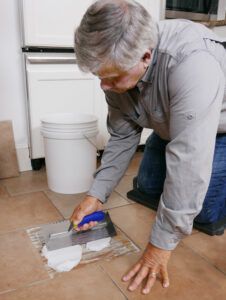
Carefully place the new tile into position, making sure it’s level with the surrounding tiles. Press it firmly into the adhesive, using a level to check that it’s flush with adjacent pieces. Wipe away any excess adhesive that squeezes out from the edges. Let the adhesive dry for several hours before proceeding to the grouting stage so it can bond securely to the subfloor.
Grouting the New Tile
The final step in replacing a cracked tile is grouting, which seals the tile in place and creates a finished look. Follow the steps below:
- Mixing and applying grout: Prepare the grout according to the manufacturer’s instructions. Using a rubber float, apply the grout diagonally across the tile joints, ensuring all gaps are filled.
- Cleaning excess grout: After applying the grout, use a damp sponge to clean the tile surface, removing any excess. Be careful not to remove too much grout from the joints. Allow the grout to set for the recommended time before giving the tile a final polish with a dry cloth.
- Curing and sealing: Let the grout cure completely, which typically takes 24 to 48 hours. Once cured, apply a grout sealer to protect against stains and moisture. This step helps maintain the appearance and integrity of your newly repaired floor.
Advanced Tips for Tiling
While the basic steps cover most scenarios, some advanced tips can improve your results.
Matching Tile
One of the biggest hurdles in replacing a tile is finding a perfect match. If the tile isn’t available at local stores, you can search online marketplaces. Taking a tile sample to a specialized tile shop may help you identify the exact match.
Using a Grout Saw
A grout saw can make removing old grout easier and more efficient. This tool is particularly useful for tougher grout lines when a utility knife doesn’t cut it. Invest in a high-quality grout saw if you plan to undertake more tiling projects in the future.
Leveling Systems
Tile leveling systems help maintain perfect alignment and prevent lippage, a difference in elevation between two adjacent tiles, during installation. These systems include spacers and clips.
Custom Grout Colors
If you want your grout to match perfectly, you can order custom grout. Specialty stores or online retailers often offer grout color-matching services.
Maintaining Your Tiled Floor
Regular maintenance helps prevent future damage and keeps your floor looking its best. Clean your tiled floor regularly with a pH-neutral cleaner to avoid damaging the grout or tile surface. Sweep or vacuum frequently to remove abrasive dirt and debris that can cause scratches.
Consider using area rugs or mats in high-traffic zones to reduce wear on your tiled floor. This is especially beneficial in kitchens, hallways, and entryways, where foot traffic is heaviest. Placing furniture pads under heavy furniture also helps prevent scratches and reduces pressure points on your tile surface. This small step can go a long way in preserving your tile floor.
Sealing the grout lines periodically can extend the life of your tile installation by providing a barrier against stains and moisture. Grout sealers are easy to use and available in spray or applicator forms.
Resources:
Finding a matching tile can be difficult. Look on the underside of the tile for clues and bring the tile with you when looking for a match.
Everything Silva used to replace the tile, including the cold chisel, hammer, notched trowel, and grout, can be found at The Home Depot.
The acrylic base Tom used in place of thinset is Acrylpro Professional Tile Adhesive, manufactured by Custom Building Products. It can be found at The Home Depot.
